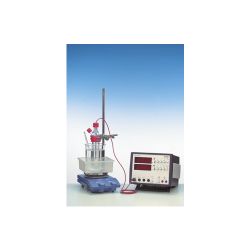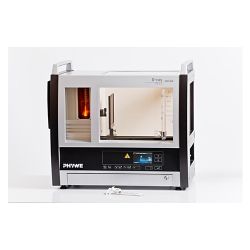Основные методы визуализации микро- и наноструктур с помощью
Principle
Approaching a sharp silicon tip mounted on a cantilever to a sample surface leads to an atomic scale interaction. The result is a bend of the cantilever which is detected by a laser. In static mode the resulting deflection is used to investigate the topography of the sample surface line by line using a feedback loop. In dynamic mode the cantilever is oscillated at fixed frequency resulting in a damped amplitude near the surface. The measurement parameters (setpoint, feedback gain) play a crucial role for image quality. Their effect on the imaging quality is investigated for different nano structured samples.
Benefits
- Investigation in static and dynamic mode
- Modification of numerous parameters to optimize image quality
- Perform experiment with different samples
- Excellent price-performance ratio
- Custom-designed for use in teaching labs
- Microscope consists of one compact, portable instrument, no additional instruments required
- Vibration isolated for better and reproducible results
Tasks
- Learn how to mount a cantilever (with tip) and approach the tip towards a sample.
- Investigate the influence of the scanning parameters on the imaging quality and performance, e.g. PID gain, setpoint (force), vibrational amplitude, and scanning speed. Use both static and dynamic force mode.
- Image different samples (microstructures, carbon nano tubes, skin cross-section, bacteria, CD stamper, chip structure, glass beads) by optimizing the parameters respectively.
What you can learn about
- Atomic Force Microscopy (AFM)
- Lennard-Jones potential
- Imaging of nano structures
- Static Force Mode
- Dynamic Force Mode
- Feedback loop
- Force
- Vibrational amplitude
Software included. Computer not provided.
| Наименование | Номер артикля | Кол-во |
|---|---|---|
| Компактный АСМ, атомно-силовой микроскоп | 09700-99D | 0,00 |











